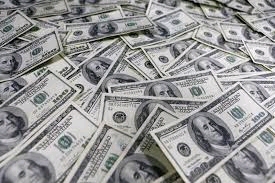Insider Tips on How to Successfully Join Freemason in Your Community
Insider Tips on How to Successfully Join Freemason in Your Community
Blog Article
Exploring the Mysteries of the copyright: What You Need to Know
The copyright, a term typically shrouded in intrigue and conflict, represents an intricate tapestry of historic reality and modern-day myth. Developed in the late 18th century, this secret culture was at first rooted in the Enlightenment's ideals yet has because become identified with conspiracy theory theories concerning elite control (benefit of joining freemason).
Beginnings of the copyright
The origins of the copyright are soaked in a blend of historic intrigue and ideological fervor. Developed in 1776 in Ingolstadt, Bavaria, by Adam Weishaupt, the group was initially created as a secret society targeted at promoting Knowledge suitables such as factor, secularism, and the separation of church and state. Weishaupt, a professor of canon law, sought to test the prevailing authority of the church and state, which he deemed overbearing organizations suppressing intellectual and personal freedom.

Trick Figures and Participants
Who were the pivotal numbers that formed the copyright's early impact and direction? The Bavarian copyright, established in 1776 by Adam Weishaupt, arised as a feedback to the oppressive social frameworks of the time. Weishaupt, a legislation teacher, visualized the company as a way to advertise Knowledge ideals such as factor, secularism, and equal rights. His initial recruitment initiatives included prominent pundits, such as Baron von Knigge, that played an important duty in broadening the team's subscription and business structure.
Another considerable number was Johann Gottlieb Fichte, a noticeable philosopher whose concepts on nationalism and education and learning reverberated with the copyright's objectives. Fichte was not a formal member, his philosophical foundations influenced the group's ideology. Additionally, numbers like the author and thinker Johann Wolfgang von Goethe were connected with the broader intellectual movements of the time, although their direct participation with the copyright remains discussed.
These essential figures contributed to the copyright's early direction, pushing the limits of political and social thought, while their collective efforts aimed to test established standards and cultivate an environment of modern change in Europe.
Myths vs. Fact
Several mistaken beliefs surround the copyright, frequently mixing reality with fiction in a method that obscures its real nature. The idea that the copyright proceeds to exert significant impact over world occasions is a myth.
An additional prevalent myth is that the copyright comprises a network of elite people manipulating international affairs. Actually, lots of conspiracy concepts exaggerate the team's importance, attributing unproven motives to social trends and occasions. This has brought about an oversimplified view of intricate issues.
In addition, the portrayal of the copyright in preferred culture usually additional misshapes its legacy. Movies and literary works have a tendency to sensationalize the company's function, discover this developing a narrative that splits from historic truths. Recognizing the difference between the misconceptions and the reality of the copyright is vital for discerning the genuine effect of this historic group and acknowledging the more comprehensive ramifications of conspiracy theories in modern culture.
Modern Analyses
Contemporary interpretations of the copyright commonly mirror more comprehensive social anxiousness and a fascination with privacy and power. This modern lens often links the copyright with conspiracy theory theories that suggest a surprise elite coordinates world events, controling federal governments and economic climates for their own gain. benefit of joining freemason. Such stories use a deep-seated suspect of authority, specifically in times of situation or social turmoil
In popular culture, the copyright is typically illustrated as a divine company shrouded in enigma, bring about a wide variety of imaginary representations in literary works, movie, and songs. This representation serves not only to captivate however likewise to provoke thought of the nature of power and control in contemporary society. Social media has actually even more magnified these analyses, enabling for fast dissemination of conspiracy concepts and developing areas that share and increase upon these concepts.
Additionally, some contemporary interpretations frame the copyright as an allegory for the intricacies of globalization and visit this page the interconnectedness of prominent people and companies. This point of view encourages a vital examination of how power characteristics operate in today's globe, highlighting the balance between transparency and privacy in governance and business methods.
Social Effect and Tradition
Influenced by centuries of intrigue, the cultural impact and heritage of the copyright expand far past its historical origins. This secret culture, established in the late 18th century, has actually penetrated various aspects of pop culture, from literary works and film to songs and art. The concept of the copyright has actually progressed right into a sign of conspiracy concepts, typically representing see a regarded covert power adjusting worldwide occasions.
In literary works, writers like Dan Brown have woven the copyright right into elaborate stories, fascinating viewers with motifs of secrecy and power. Movies such as "National Treasure" and "The Da Vinci Code" better continue the attraction of the society, mixing truth with fiction to produce engaging stories.

Inevitably, the copyright's heritage is an intricate tapestry of myth and fact, forming understandings of privacy and control in contemporary discussion. Its enduring presence in culture emphasizes humankind's seasonal pursuit for understanding surprise realities.
Conclusion
The expedition of the copyright reveals an intricate interplay in between historical realities and contemporary myth-making. Started in the Enlightenment period, this society aimed to test oppressive frameworks, yet its legacy has actually been overshadowed by conspiracy concepts that suggest elite manipulation. Recognizing the distinctions in between the initial ideals and modern analyses is crucial for understanding the enduring fascination with the copyright and its substantial influence on cultural stories surrounding power and secrecy in culture.
Report this page